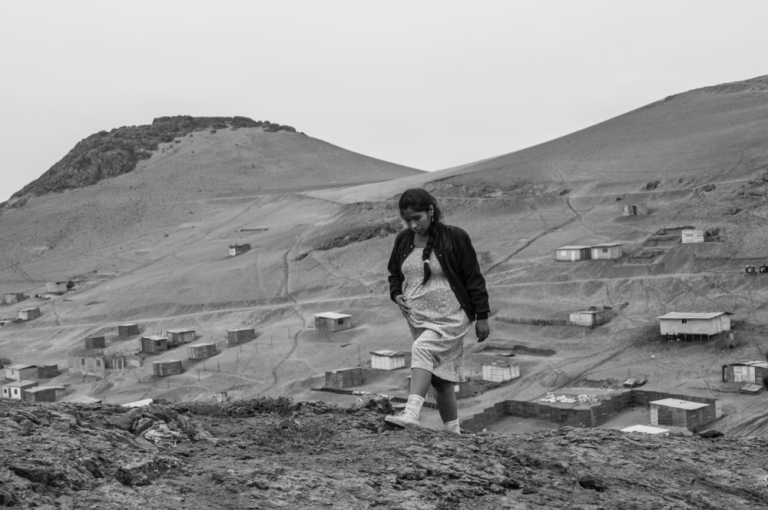
Canción Sin Nombre
30 April, 2020Canción Sin Nombre (Song Without a Name) is a black-and-white crime thriller laced with sadness as it charts a fictional path based on the very real disaster of child trafficking in 1980s Peru.
It is set against the backdrop of Peru’s modernisation and development but also the government’s ongoing fight with the terrorists of the Shining Path group.
With this beautiful, austere picture, Melina León became the first Peruvian director to have a film at the Cannes festival, where it played last year.
The storyline follows Georgina, a 20-year-old indigenous woman, who gives birth at a clinic which had advertised apparent support services for expectant mothers.
This clinic is anything but a warm, safe space for young, vulnerable mothers and it becomes clear soon on that Georgina’s baby has not been taken to ‘hospital’ as she is told, but instead has been abducted.
Pedro is a journalist at La Reforma newspaper and picks up the story, telling Georgina he is determined to uncover the truth and beginning a journey into the dark world of illegal adoption.
Tragically, child trafficking rings continue to exist in many corners of the world and, as Pedro finds out, these outfits are powerful, dangerous criminal organizations whose tentacles often reach into the worlds of politics, law and business.
Canción Sin Nombre plays out in a 4:3 aspect ratio that enhances the retro feel of televisions at that time, backed up by the cars, telephones and dress of 80s Peru.
The potatoes that Georgina sells on the street or the wooden shack where she lives with the baby’s father, Leo, are enhanced and given a beauty by Melina León that is normally not apparent in such basic staples of modesty and poverty.
The director places emphasis on the vivacity of a community celebration as well as the aridity of the steep, salty coastline; drawing a picture of simple pleasures and daily hardships for people eking out livings in the dusty townlands outside Lima. The barren landscape contrasts with the sweaty scenes in Iquitos, in Peru’s northern Amazon region, where Pedro and his photographer travel as his investigation into the missing children deepens.
Sidebar social commentary complements the main plot illustrating the myriad public pressures and societal problems forty years ago in Peru, such as the suspicion and secrecy surrounding gay relationships and domestic terrorism.
Some of these issues continue to this day; others have been overcome, but the reminders serve as signposts showing us the rocky roads that Latin American nations have been along in the 20th century.
This is a film that might not be attractive to the casual movie-goer because it sits comfortably in two specific categories: for students of Peru who have a knowledge of the country’s stories that ferment in the background and for fans of arthouse, black-and-white cinema and artistic story-telling.
Follow Sounds and Colours: Facebook / Twitter / Instagram / Mixcloud / Soundcloud / Bandcamp
Subscribe to the Sounds and Colours Newsletter for regular updates, news and competitions bringing the best of Latin American culture direct to your Inbox.

